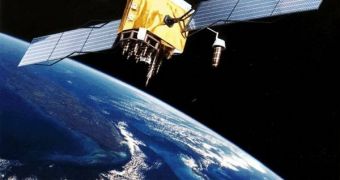The US Department of Defense recently started taking a closer look at its aging Global Positioning System (GPS), after warnings from a top federal official showed that it might be ill-equipped, to ensure that the system's coverage would endure over the next 5 to 10 years. According to the Government Accountability Office (GAO), the top congressional watchdog, the number and quality of satellites in the current GPS constellation are decreasing, and the DOD may find it impossible to replace them in due time, before they get irreparably damaged or change their orbital positions significantly.
On Thursday, the GAO Director of acquisition and sourcing, Cristina Chaplain, told the Senate Committee on Armed Services that another major program affecting the repair and improvements program was that of cost overruns, which are pretty significant even at this point. She added that the number and orbital positions of satellites that a GPS receiver could detect were quintessential in ensuring that the readings gave off by the device were correct.
In addition to being extensively used by the automotive industry, GPS data are also a part of mobile phones, laptops, but they are used for very precise scientific measurements as well, such as assessing minute variations in sea levels, or tracking whales and birds during their migrations. “It's not that people will suddenly not be able to use the system, but if you start to lose satellites then maybe the performance starts to degrade slightly,” said University College London (UCL) space geodesy researcher Marek Ziebart, quoted by Nature News.
The simplest way of keeping track on the GPS system is to count how many satellites are currently becoming obsolete, damaged, or spent, and how many observatories are sent up to space to replace them. Without new and accurate satellites, the entire system loses accuracy, and can continue to do so until, in the end, the remaining components are unable to provide even the most basic form of location. At this point, the US has 31 operating satellites, with only 24 being absolutely necessary for global coverage. But some of these machines are hibernating, while others are nearing their final breath.
“There's a potential risk, but GPS isn't falling out of the sky — we have plans to mitigate risk and prevent a gap in coverage,” said the command lead for position, navigation and timing at the US Air Force Space Command (AFSPC), Colonel Dave Buckman. New satellites will start being added to orbit between 2010 and 2014.

 14 DAY TRIAL //
14 DAY TRIAL //